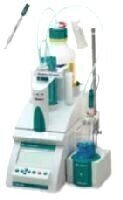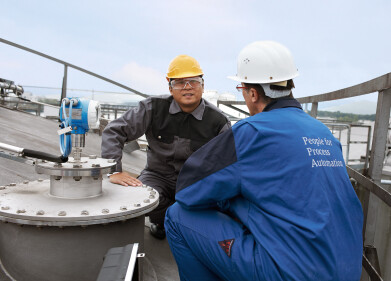Analytical Instrumentation
Automated Titration in Gypsum Formulations: an Easy Solution For Difficult Samples
Jun 06 2008
monitoring of additives to gypsum such as lime are vital. The total lime content on plaster formulations is historically carried out using a manual titration method with phenolphthalein colour indicator.
This manual method is open to the many errors that are associated with manual colorometric titration determinations.
These sources of error include inaccuracies associated with differing
colour endpoints between analysts, overtitrating due to burette precision and the most common problem with gypsum titrations, the colour and the turbidity of the gypsum solution almost eliminates any visible colour change.
The solution to these analytical problems is to replace the manual
colorometric method with the modern Titrino plus potentiometric autotitrator from Metrohm. However, Titrino plus alone is not the answer, a robust glass electrode which can withstand the difficult matrix of the plaster solution is essential for accurate and precise
reproducible results. The best electrode for the job is the Unitrode sensor.
Strict control of products for this huge business is essential.Metrohmprovide the instrumentation to enable precise and
accurate titration of gypsum plaster products. Total lime titrations are
determined by titrating HCl acid into gypsum plaster mixed into de-ionised water. Using the Metrohm Titrino plus potentiometric autotitrator, errors associated with manual titrations which were mentioned at the start of this article are eliminated. When undertaking a manual addition titration, the pink phenolphthalein colour indication is used to indicate when the titration endpoint is reached. This is very difficult to see in a solution of gypsum, particularly if the gypsum is of a pink type. Using the Titrino plus with a glass electrode sensor, this problem is eliminated. However, the samplematrix of gypsumis a very difficult for many electrode types. The particulates in the sample matrix will block the ceramic pin diaphragm of standard electrodes and the alkali nature of the formulation will reduce the response of the electrode causing what is termed an alkali error. Therefore, a robust
high specification electrode is essential. The Metrohm Unitrode sensor has been designed for such samples. The Unitrode has a fixed round-joint diaphragm; the large surface area of this diaphragm ensures the sensor is insensitive to blockage by particulates or contamination. In addition, the glass membrane of the Unitrode electrode is suitable for alkali conditions such as those found in solutions of plaster. This is because they are made from a specialised U-glassmembrane which has
been developed to have a very low alkali error.
Digital Edition
PIN 25.1 Feb/March
March 2024
In This Edition Safety - The technology behind the ION Science Tiger XT - Safety with ammonia and LOHCs as hydrogen carriers Analytical Instrumentation - Discussion on new tribology te...
View all digital editions
Events
Apr 22 2024 Hannover, Germany
Apr 22 2024 Marrakech, Morroco
Apr 22 2024 Muscat, Oman
Apr 22 2024 Rotterdam, Netherlands
Apr 23 2024 Singapore


















